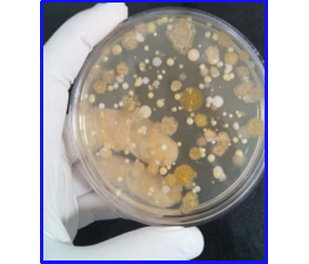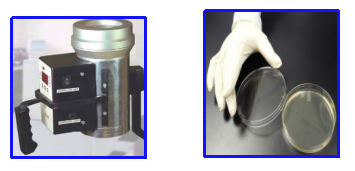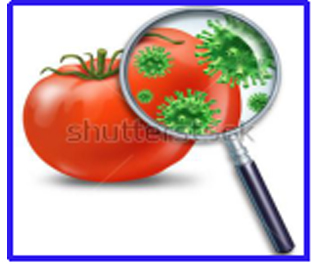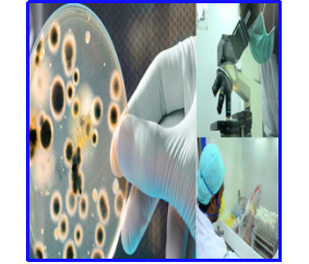Why ?
Microorganisms can originate from health care personnel and from environmental sources (Air and surfaces).A regular Micro Testing program can provide insight to a potential problem long before it brings production to a halt. Microbial contaminants found in the environment can be devastating to a final product in any production industries. Air can play a role as a reservoir for microorganisms. In addition to Air Monitoring, now a days Compressed Air monitoring is growing fast as compressed air is generally used in pharmaceutical mainly for medical device.

How ?
Air Monitoring can be done by below methods:
Active Air Sampling / Passive Air Sampling

Surface Monitoring:
• Swab Testing of Contact Surfaces
• Swab Testing of Hand/Fingers of Personnel handling the test items/product

Water Analysis
• Drinking Water Analysis as Per IS 10500:2012: It includes water from any sources e.g. Bore well water, River water, Pond Water, Well water etc.
• Packaged Drinking water Analysis as IS 14543:2016
• Packaged Mineral Water Analysis as per IS 13428:2009
• Swimming Pool Water Analysis as Per IS 3328:1993 RA 2003
• Irrigation Water Analysis as Per IS 11264:1986, RA 2009
• Reagent Grade Water Analysis as Per IS 1070:1992, RA 2008
• Process Water as Per IS 4251:1967
• Purified Water as per USP/IP/BP
• Other waters- E.g. Cooling tower water, Boiler water, recreational water etc.

Why your product and environment should be free from Microbial Contamination:
Pathogenic microorganisms can cause infections or intoxications, plays role in biodegradation and cause food spoilage and can possibly harm health and beauty of the consumers.

Why your product or environment shall be tested:
To ensure the product’s safety to foresee the microbiological risk linked to deterioration
What to be tested ?
Microorganisms/Contaminants involved in food spoilage are:
• Escherichia coli
• Staphylococcus aureus
• Pseudomonas aeruginosa
• Bacillus cereus
• Clostridium perfringens
• Clostridium botulinum
• Vibrio cholerae
• Vibrio parahaemolyticus
• Salmonella species
• Shigella species
• Listeria monocytogens
• Total Bacteria
• Yeast & Mould

Above microorganisms can lead to spoilage of below foods:
• Meat & Meat products
• Fish & Fish products
• Bakery Products
• Milk & Milk Products
• Raw fruits and vegetables
• Thermally Processed Products such as Retort and MATS product
• Ready to eat/serve food
• Ready Prepared meals
• Frozen fruits & vegetables
• Ready to serve/drink beverages
How these can be evaluated
By carrying out analysis of the product by national/international standards such as Indian Standards, BAM (Bacteriological Analytical Manual), APHA (American Public Health Association), AOAC (Association of Official Agricultural Chemists).

Parameters that can be used for examination of above mentioned contaminants:
• Total Plate Count/ Total Bacterial Count/ Aerobic Microbial Count/ Total Viable Count/ Total Aerobic Microbial Count
• Yeast & Mould Count
• Detection and Enumeration of Escherichia coli
• Detection and Enumeration of Staphylococcus aureus
• Detection of Pseudomonas aeruginosa
• Detection and Enumeration of Bacillus cereus
• Detection and Enumeration of Clostridium perfringens
• Detection and Enumeration of Clostridium botulinum
• Detection of Vibrio cholerae
• Detection of Vibrio parahaemolyticus
• Detection of Salmonella species
• Detection of Shigella species
• Detection of Listeria monocytogens

Speciality Analysis:
Speciality and chemical products are analysed to support the customer for research & development, for quality assurance and to comply with regulatory standards
• Migration tests of packaging material as per EU No.10/2011 guidelines & IS 9845:1998
• Assay/Purity of various chemicals
• Treatability studies for waste water plants
• Technical support for proper functioning of waste water plants
• Stability studies
• Fertilizer analysis
• Consumer Products
• Challenge Test Study
• Shelf life Study
• Efficacy test.
 Video About Autocal
Video About Autocal